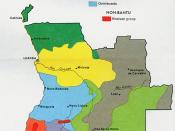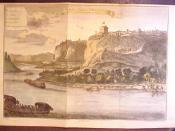The States and Empires of Ancient Central Africa
By Aaron Siff-Scherr
Global: Mr. Frank
3/26/14
When the Portuguese pioneered the exploration of Africa below the equator in the late 15th century, it exposed a mass of culture and traditions unseen to the rest of the world. The states in Ancient Central Africa had a similar way of life to that of other populations around the world from the 15th to the 18th century. Hunting and agriculture dominated their food supply as well as provided many men and women with jobs and tasks to accomplish. Even some artisanal craftsmanship such as art and pottery was found in villages around West-Central Africa (Klieman, 10). Religion played an important role, as Christianity was brought over by the Portuguese and eventually adopted by many villages and areas around Africa (Addison, 92). Central Africa was home to some of the most diverse Bantu-speaking civilizations and cultures.
The Kingdom of Kongo, the Luba-Lunda States, and the Kingdom of the Monomotapa and Great Zimbabwe, were all unique in their traditions, customs, and origin.
The Kingdom of Kongo was uncovered by Portuguese Catholic missionaries in 1485 (Addison, 92). Relations between the Bakongo and the Portuguese were pleasant for several decades. Kongo nobles traveled to Portugal, and Portuguese artisans traveled to the Kingdom of Kongo. Nobility was even brought back to Portugal as described in the Encyclopedia of Africa, "The first Catholic missionaries arrived from Portugal in 1485 and four nobles from Kongo returned to Portugal." Shortly after this trip, much of the Bakongo population was baptized (Addison, 93).
The Kongo exemplified the standard Bantu way of life, in regard to its function as a political and economic society. When the Kingdom of Kongo was first established in the 14th century, people lived in small housing units of several...


